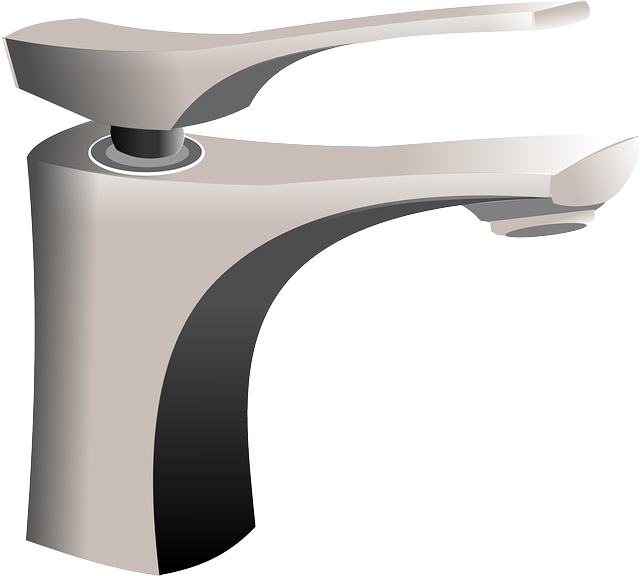Motion-sensor lighting with integrated voice-activated bathroom features is revolutionizing spaces, offering unparalleled efficiency and convenience. By detecting human movement, these systems automatically adjust illumination, significantly reducing energy consumption in bathrooms. Voice activation further enhances user experience, allowing adjustments via simple vocal commands, promoting hygiene and saving energy. As smart homes gain popularity, this technology becomes a prominent component, contributing to cost savings and sustainable living. Future advancements promise enhanced convenience and improved energy efficiency with advanced automation tailored to individual preferences.
Discover the future of bathroom lighting with motion-sensor technology, offering both energy efficiency and hands-free convenience. This innovative approach revolutionizes traditional lighting, especially when integrated with voice-activated bathroom features. Learn how these sensors detect movement, reducing energy waste, and enabling you to enjoy a modern, touchless experience. From setup to cutting-edge innovations, explore the benefits of smart bathroom lighting and its growing impact on our daily routines.
Understanding Motion-Sensor Lighting Technology
Motion-sensor lighting, a cutting-edge technology, has transformed the way we illuminate our spaces. This innovative system utilizes advanced sensors to detect human movement, automatically turning lights on and off as needed. By eliminating unnecessary energy consumption, it offers a highly efficient alternative to traditional lighting methods. In bathrooms, for instance, motion-sensor lights integrated with voice-activated features provide a convenient and hands-free experience. These smart systems respond to vocal commands, allowing users to adjust lighting without touching switches or fixtures, particularly beneficial in settings where hygiene is paramount.
The technology behind motion-sensor lighting involves a combination of PIR (Passive Infrared) sensors and sometimes ultrasonic sensors. PIR sensors detect body heat and movement, while ultrasonic sensors use sound waves to identify objects in their path. This dual approach ensures accurate detection, minimizing false triggers and optimizing energy savings. With the rise of smart homes, motion-sensor lighting has become a key component, contributing to reduced energy bills and more sustainable living environments.
Benefits of Energy Efficiency with Voice-Activated Bathroom Features
In today’s pursuit of sustainable living, energy efficiency is a top priority for many homeowners, and the bathroom is no exception. Integrating voice-activated bathroom features powered by motion sensors offers a compelling solution. These innovative systems not only reduce energy consumption by automatically illuminating spaces when needed but also enhance convenience and accessibility. For instance, hands-free operation of lighting allows for safer navigation, especially in low-light conditions or for individuals with limited mobility.
Moreover, voice activation further streamlines the user experience. With simple vocal commands, occupants can adjust lighting levels or activate specific functions, eliminating the need for physical interaction. This not only promotes hygiene but also contributes to overall energy savings by preventing unnecessary energy draw when spaces are unoccupied. As a result, homeowners can enjoy modern, convenient bathrooms while significantly reducing their carbon footprint.
Hands-Free Operation: The Convenience Factor
Hands-free operation is one of the most appealing aspects of motion-sensor lighting, especially in spaces like bathrooms where convenience and hygiene go hand in hand. With voice-activated bathroom features becoming increasingly popular, motion sensors have evolved to not only detect presence but also respond to voice commands. This means you can turn on the light simply by saying “Hey, turn on the bathroom light” without having to touch anything, ensuring a hygienic environment.
The convenience extends beyond just lighting; it includes setting the desired ambiance for various activities. For instance, adjusting the lighting intensity for shaving or applying makeup can be achieved with simple voice instructions, providing a seamless and hands-free experience that saves time and effort. This technology is revolutionizing daily routines, making life easier and more efficient.
Integration and Setup of Motion-Sensor Lighting Systems
The integration and setup of motion-sensor lighting systems for bathrooms or any space is a seamless process, offering both energy efficiency and hands-free operation. These systems typically consist of sensors, lights, and sometimes voice-activated controls, making them part of the growing trend towards smart homes. Installation involves strategically placing sensors to detect movement within specific areas, adjusting light levels accordingly, and ensuring that lighting automatically turns off when no motion is detected for a set period.
For bathroom applications, such systems can enhance user experience with automatic lighting during tasks like handwashing or shaving, eliminating the need to touch switches. They also contribute to energy conservation by reducing unnecessary light usage. With modern voice-activated bathroom features becoming increasingly popular, integrating motion sensors allows hands-free control of lighting, creating a more convenient and hygienic environment.
Future Trends and Innovations in Smart Bathroom Lighting
The future of smart bathroom lighting looks bright, with technology advancing at a rapid pace. One emerging trend is the integration of voice-activated bathroom features, allowing users to adjust lighting and other settings with simple commands. This hands-free operation not only enhances convenience but also contributes to energy efficiency by minimizing unnecessary light usage.
Innovations in smart lighting include more sophisticated motion sensors that can differentiate between occupants and pets, ensuring lights turn on only when needed. Additionally, advanced automation systems can learn user preferences and adjust lighting accordingly, creating a personalized ambiance that optimizes comfort and energy savings. These future trends promise to make bathroom lighting not just functional but also an integral part of the overall smart home experience.
Motion-sensor lighting, coupled with voice-activated bathroom features, represents a significant leap forward in both energy efficiency and convenience. By automating lighting control, these systems not only reduce energy consumption but also offer hands-free operation, enhancing hygiene and accessibility. As technology advances, we can expect to see even more sophisticated integrations, making smart bathroom lighting an increasingly essential component of modern homes. Embrace the future of bathroom functionality with these innovative solutions that cater to both efficiency and user experience.
